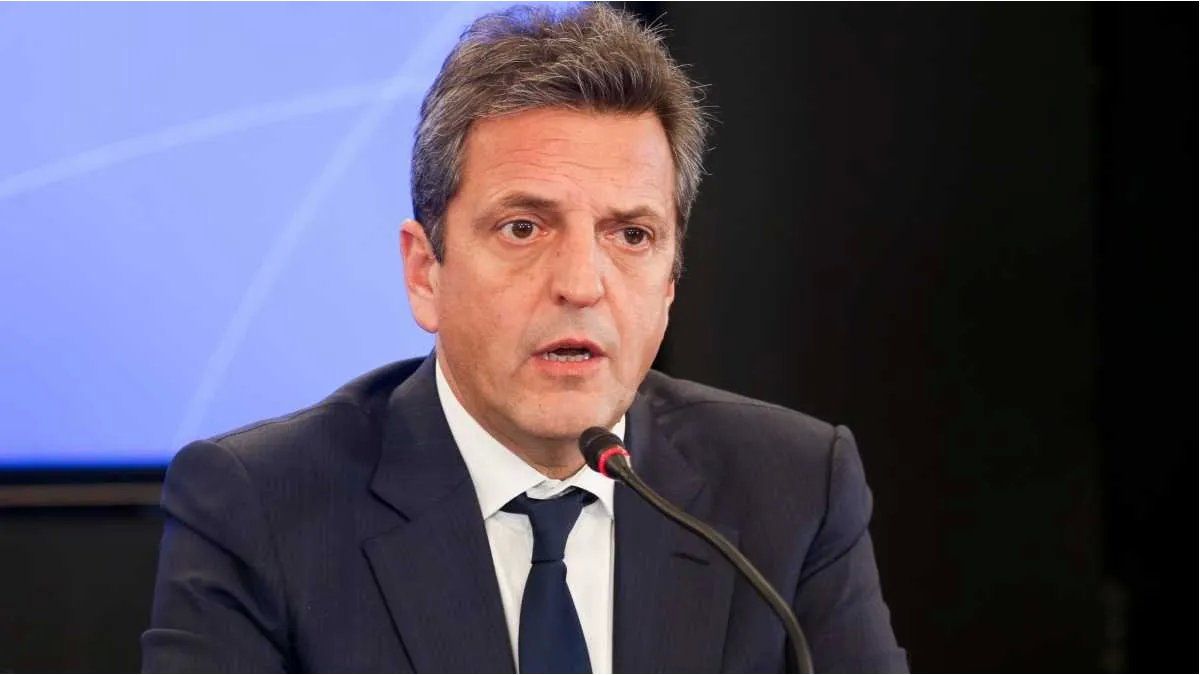Given the severe impact of drought and excess dollar demand that there is for the convenience of importing products with a strong exchange rate delay like the current one, The Government is urgent today to get dollars and try to lose as few reserves as possible from the Central Bank (BCRA). And it is that, last month, the monetary regulator lost US$1,260 million in the month in total and closed April with u$s35,296 million in its coffers. Meanwhile, so far in May, it has already sold $274 million in the official market. Added to this drain are the payments that must be made to the Monetary Fund (IMF), in fact, the country disbursed US$760 million from reserves to the organization and the perspective, within the framework of a complex context for the field, is not good, so it has to find all possible mechanisms to attract dollars.
In this context, for Eco Go economist Santiago Manoukian, “the challenge went from being how to accumulate reserves to how to retain them”. Thus, he considers that the Government already considers how to capture foreign currency, but rather how to retain them and considers that, “under the premise, everything adds up.”
The truth is that the Government has been appealing to various urgent measures that seek to mitigate the shock and build a “dollar bridge” until the elections. Thus, Manoukian indicates that he puts carrots (incentives), sticks (restrictions) and rabbits (income and/or extra resources), seeking to generate a “real” impact, but also on impaired expectations.
Given this scenario, and seeing the available tools, it seems difficult to detect them, but the Government still has some possible mouths for collecting dollars, according to analysts.
First resource: dollars from international organizations
The economist Federico Glustein points out that the first is the international credit organizations. “You can bet to continue insisting that international organizations, such as the Andean Development Corporation (CAF), the Inter-American Development Bank (IDB) and the World Bank (WB), grant you money through different programs,” he explains. In fact, it is a channel that the Government has been working hard on, with repeated trips by the Economy Minister, Sergio Massa, to negotiate new disbursements in recent months.
That is a source of money that allows you to get cheaper dollars than by other mechanisms, beyond the advances that may come from the International Monetary Fund (IMF). Although, as Manoukian also explains, he must continue negotiating with that body to make the reserve target more flexible, reduce the amount of net payments this year and advance disbursements to prevent the Special Drawing Rights (SDRs) account from being negative and that he BCRA have to use their own reserves in transfers to the organization.
Second resource: new spaces for trade and investment
And, in a similar sense, as indicated by the economist Ricardo Aronskind, in that “everything adds up” mentioned above, “the Government can resort, on the other hand, to different international economic spaceswith which there is great potential in terms of investment and increased tradeto obtain substantial financing that breaks speculation about the value of the currency”.
This is, according to Manoukian, to obtain additional resources, via the financial accountas is being done with international financial organizations, the Saudi Fund, Chinese investments, activation and use of the swap, and negotiations with Brazil to reduce the use of dollars in trade.
However, Glustein clarifies that this “does not imply that dollars are obtained directly”, but what is done is to prevent dollars from leaving using swaps or real through a direct conversion mechanism those currencies to compensate the seller of the other country.
Third resource: the financial leg
One strategy that the Government is carrying out is that of sell sovereign debt bonds and intervene with reservations to contain the gap of the parallel dollar in the face of the greater dollarization of portfolios and, also, an increase in interest rates was ordered, which recently reached 91% annual nominal. But those two strategies cost you dollars, on the one hand, and, on the other, they solve an urgent problem, but open up a possible conflict going forward because of the widening quasi-fiscal deficit.
For this reason, also with a financial perspective, Glustein risks that it could advance with a new debt issuance of some state companies. Although he clarifies that “this is not so viable, it is a possibility that there is the issuance of debt from companies, such as YPF”, through some negotiable obligation or other asset to be able to get dollars.
Fourth resource: the farm dollar or soybean 3
We already see that the agro dollar it is not being efficient and that the obstacles to foreign trade are becoming increasingly stronger. It’s not that dollars come in, but basically they almost don’t come out. Those are three small mouths, but they function as a kind of palliative.
On the other hand, Manoukian mentions that The Government has been expanding and extending the exchange rates sectorial devaluations (partial devaluations), both for exports (“soybean/agro dollar”), in order to advance the settlement of foreign exchange, but warns that this is “at the cost of compromising future supply and generating impacts on prices”,
The problem is that, as pointed out by an economist from the Scalabrini Ortiz Center for Economic Studies, Federico Zirulnik, it seems “that differential exchange rates do not have much more to contribute”. And it is that US$5,000 million soybean dollars were expected, and, for now, they have come true liquidations for almost US$1.900 million only.
“We already see that the agricultural dollar is not being efficient. It’s not that dollars come in, but basically they almost don’t come out”, describes Glustein on this problem. And when they say that “they do not come out” they mean that the Government has been adjusting imports more and more. In this sense, it has decided, for example, “to continue forcing postponements in the payment of imports, so that the debt for imports is the highest since 2003,” according to Manoukian.
Dollar: a complex panorama
The situation is obviously very complex. Argentina was already corseted with a agreement with the IMFwhich was difficult for him to comply with in normal conditions due to the usual complications that our country has on the external front, and it became even more complex with the problems that a severe drought adds.
That is why, in an electoral year, with little room for maneuver due to the weakness of the current management, it makes it necessary to resort to some possible sources of income for dollars, which, although not very large, can function as palliatives until the elections.
Source: Ambito




